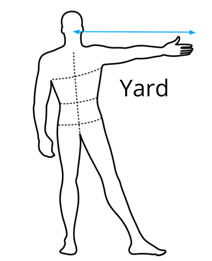PDF chapter test TRY NOW
One fine day, your mother asks you to get milk from the milkman. Will you ask the milkman, a bag full of milk or a cup of milk?
If someone inquires about your height or weight, how will you assess and inform them?
How will you choose an appropriate mode of transport to reach a particular destination?
To answer all these questions, we need to know about the concept of measurement.
Measurement is used everywhere around us.
Example:

Measuring clothes for stitching

Cooking food
The comparison of unknown quantities (a number) with some known fixed quantities (unit) is known as measurement.
Parts of measurement
The two main parts of measurement are the number and its unit. For instance, if the length of a book is found to be twice the length of your hand, then \(2\) is the number and 'hand span' is the unit selected for the measurement.

Traditional measurements
From the excavations of the Indus valley civilisation, it is evident that people had good knowledge about measurement. Even today, the garland sellers use cubit for measuring flowers, and the yard is used for measuring cloths.


Footspan, angul and mutthi are the other traditional units used in the olden days. In all these methods, people used their body parts like hand or foot for measuring length. But, it was inconsistent and lacked uniformity since it varies from person to person.
SI unit
French scientists in \(1790\) created a standard set of units called the metric system to attain uniformity in measurement. Nowadays, the International System of Units or SI units is used as a common standard unit all over the world to express the quantities of measurement.
Let us now solve the above-given questions by introducing the concept of fundamental quantities such as length, volume and time.
Reference:
https://pxhere.com/en/photo/1547683
https://pixabay.com/photos/measuring-cup-to-bake-cook-meal-2510243/
